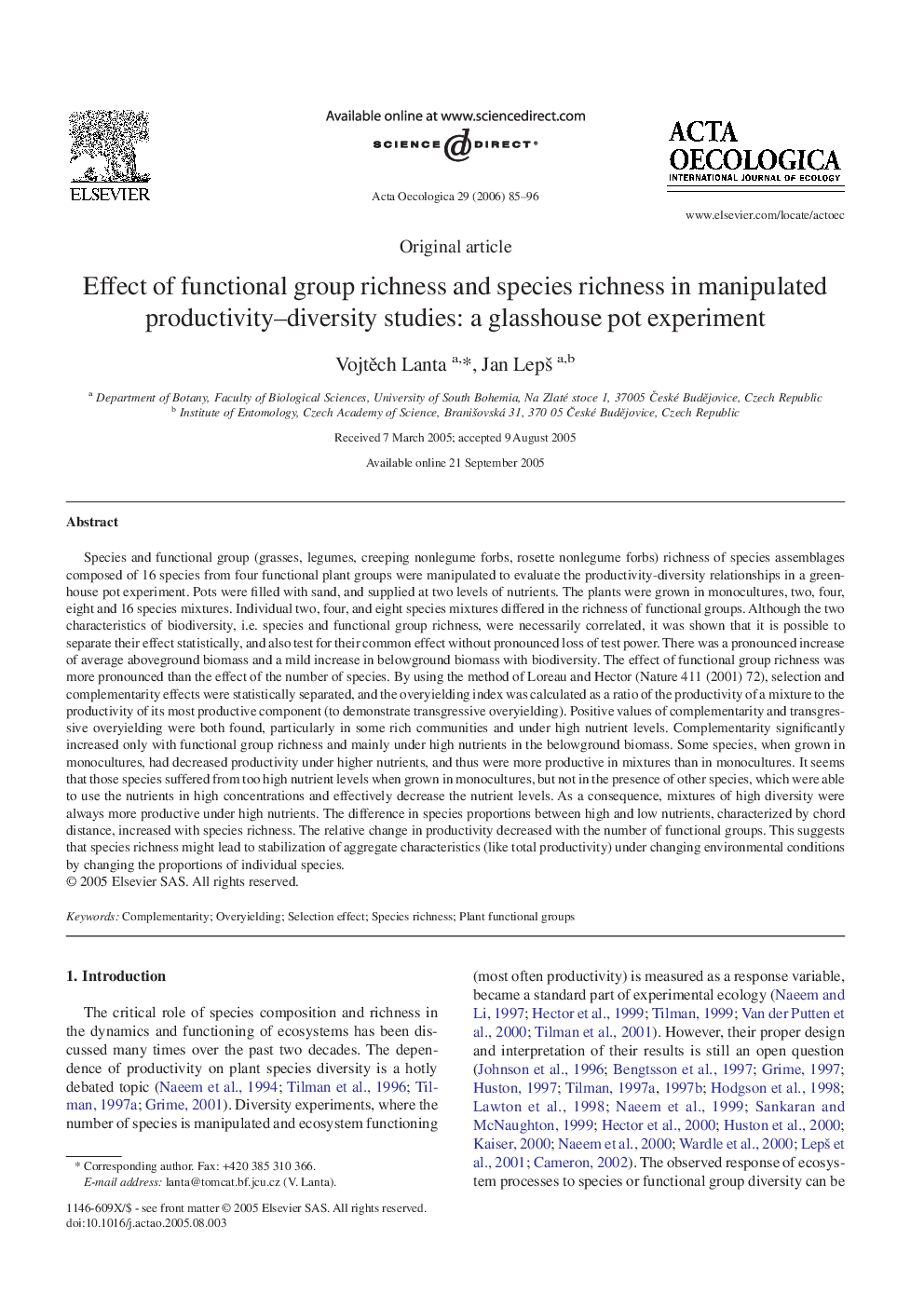| کد مقاله | کد نشریه | سال انتشار | مقاله انگلیسی | نسخه تمام متن |
|---|---|---|---|---|
| 4381411 | 1304070 | 2006 | 12 صفحه PDF | دانلود رایگان |

Species and functional group (grasses, legumes, creeping nonlegume forbs, rosette nonlegume forbs) richness of species assemblages composed of 16 species from four functional plant groups were manipulated to evaluate the productivity-diversity relationships in a greenhouse pot experiment. Pots were filled with sand, and supplied at two levels of nutrients. The plants were grown in monocultures, two, four, eight and 16 species mixtures. Individual two, four, and eight species mixtures differed in the richness of functional groups. Although the two characteristics of biodiversity, i.e. species and functional group richness, were necessarily correlated, it was shown that it is possible to separate their effect statistically, and also test for their common effect without pronounced loss of test power. There was a pronounced increase of average aboveground biomass and a mild increase in belowground biomass with biodiversity. The effect of functional group richness was more pronounced than the effect of the number of species. By using the method of Loreau and Hector (Nature 411 (2001) 72), selection and complementarity effects were statistically separated, and the overyielding index was calculated as a ratio of the productivity of a mixture to the productivity of its most productive component (to demonstrate transgressive overyielding). Positive values of complementarity and transgressive overyielding were both found, particularly in some rich communities and under high nutrient levels. Complementarity significantly increased only with functional group richness and mainly under high nutrients in the belowground biomass. Some species, when grown in monocultures, had decreased productivity under higher nutrients, and thus were more productive in mixtures than in monocultures. It seems that those species suffered from too high nutrient levels when grown in monocultures, but not in the presence of other species, which were able to use the nutrients in high concentrations and effectively decrease the nutrient levels. As a consequence, mixtures of high diversity were always more productive under high nutrients. The difference in species proportions between high and low nutrients, characterized by chord distance, increased with species richness. The relative change in productivity decreased with the number of functional groups. This suggests that species richness might lead to stabilization of aggregate characteristics (like total productivity) under changing environmental conditions by changing the proportions of individual species.
Journal: Acta Oecologica - Volume 29, Issue 1, January–February 2006, Pages 85–96